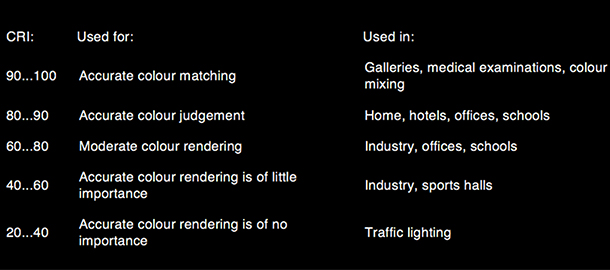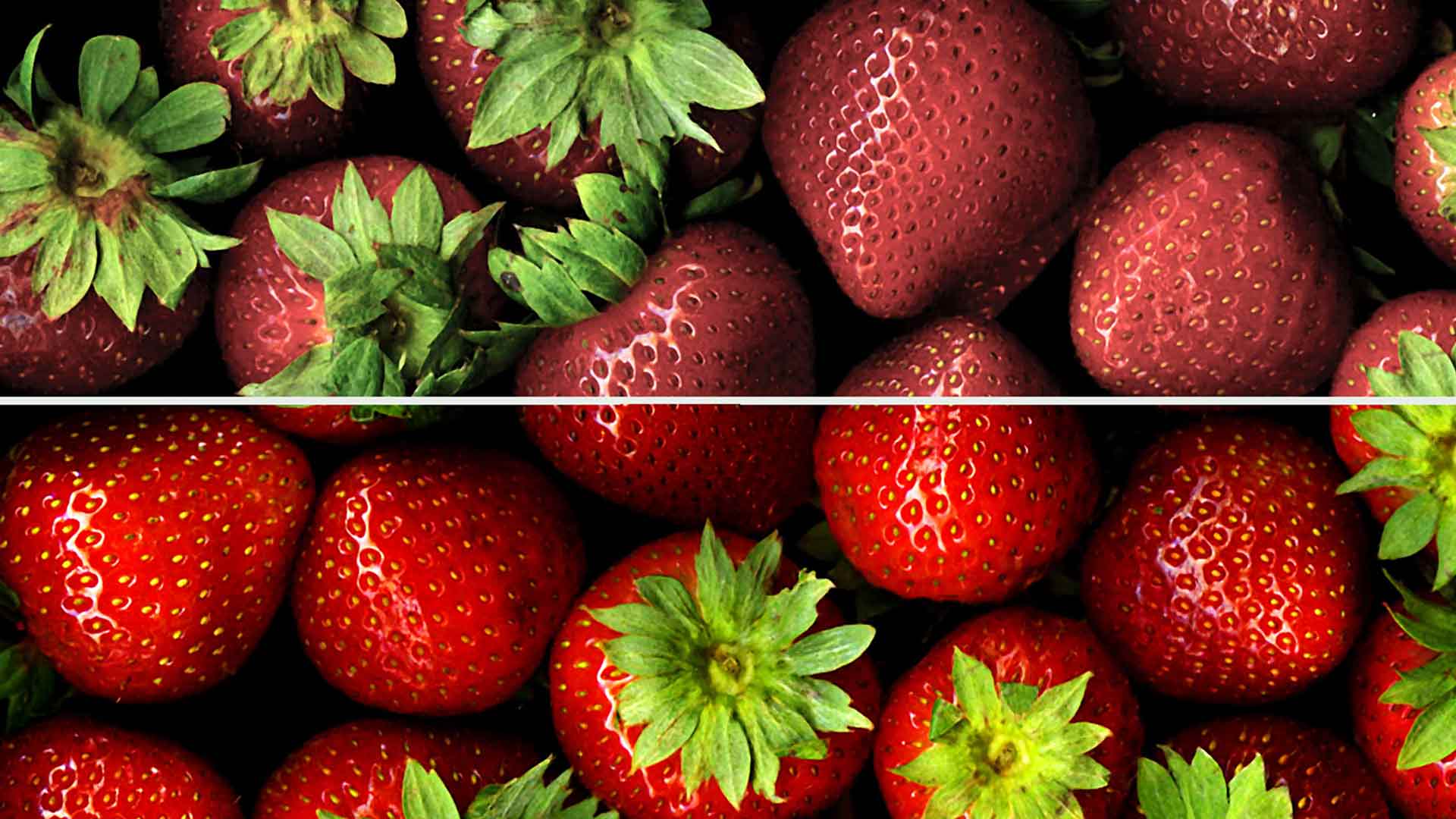Colour Rendering
The Colour Rendering Index, developed in the 1960s, is a system that measures the ability of a light source to accurately reproduce the colour of an object. Colour rendering is important in places like shops and museums, where having accurate colour matters. In places like motorways, you could get away with poorer colour rendering, because colour is less important.

On the left, good colour rendering makes the colour natural and pleasing. The exaggerated image on the right shows how poor colour rendering can make an image unrealistic and unappealing.
How it works:
There are many systems to measure colour rendering, but the CIE Colour Rendering Index (CRI) is the most popular. This might sound obvious, but it only applies to lamps that produce white light – there would be no point in assigning a CRI number to, say, a red light, as it would render everything red! It works by comparing your light source against a ‘perfect’ white light source, on eight pastel colours (referred to as Ra8), then averaging it. Based on this, it assigns a CRI number between 1 and 100, with 1 being poor, and 100 being excellent. With the emergence of LEDs, ‘Ra14’ was introduced. This brought in six, additional, more saturated colour comparison samples, to help the CRI judge LEDs more accurately. When selecting an LED light source, it’s a good idea to get one that has been tested under Ra14.

Colours used for the calculation of CRI – the top row is Ra8, the bottom row shows the additional colours used in Ra14.
The following chart helps you decide what CRI you need:

Limitations:
CRI is calculated by averaging how the lamp copes with different colours. Because it’s an average, you need to be careful. For example, a lamp with a CRI of 75 could reproduce most colours brilliantly, except a particular colour, say, blue. So it’s sometimes a good idea to check the spectral distribution data first.
Interestingly, accurate colour rendering isn’t necessarily a good thing. Studies have shown that some people prefer saturated colours to realistic ones. Many supermarkets use red enhanced lights for their meat counters, and cool ones for fish – making the products more seductive, and saving energy as well.


